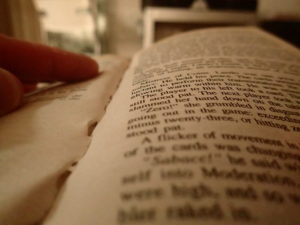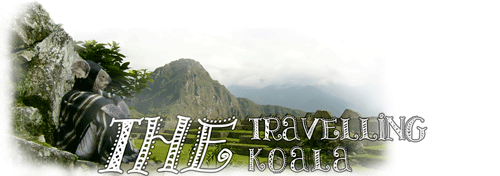
Welcome to the Travelling Koala ‘How to Study Spanish’ Series. This article deals with Spanish reading and listening. So far we’ve run with the attitude that many people should approach it with a regular, relatively fixed program and a dedication to sitting down (or standing up, I guess) and doing it. We’ve covered certain things which you should include in any good study program, and roughly divided them into daily ‘sessions’.
Spanish Reading and Listening
The last entry covered writing in Spanish at all costs, and how together with speaking Spanish it can form the basis of a good study program. In this chapter, we’re going to look at some of the other things that students think are the most valuable things of all when studying a language. While they’re great – and that’s why we’re going to look at them – we’re also going to explain why they might not be among the best ways to study Spanish.
We’ve covered the idea that if you speak and write, there must be some intense concentration going on. Writing your thoughts down or actively speaking to someone face to face, over Skype or over the phone forces you to think and engage with your subject matter or conversation partner. Unlike taking in information from a movie that you’re not understanding properly, or reading from a book you’re not interested in, there is no zoning-out when you write down your thoughts on paper, and there is less likeliness to zone-out when you are engaging in conversation (unless the person is boring). The blog entry on speaking looks at active learning in more detail.
Speaking with people is particularly effective, because not only are you forced to quickly come up with ideas and thoughts which you then transform into words, but you are forced to interpret what your partner is saying – your entire line of conversation depends on it. Speaking therefore equals better speaking skills in addition to better listening skills. But this doesn’t mean that things like reading and listening on their own won’t be useful to some degree.
Reading in Spanish
This is probably the best of the two things we are going to cover. While reading is no substitute for speaking and writing in a Spanish study program, opening a book or gazing at the screen still has its place. Reading still forces you to engage with your subject matter to some extent, although you will probably have to read quite often and in large volumes in order to retain anything. Reading short, easy-to-read texts which you find interesting are a good place to start.
Suggestions for Reading Resources
- Comprehension books with short texts or stories are valuable. These often have questions at the end of each chapter to test your knowledge on the texts. Easy Spanish Reader by William Thomas Tardy is a great beginner and intermediate book to track down. It sometimes comes with a CD.
- Dual language books are great as well. These are books which generally tend to be collections of short stories or comprise of a single novel which are published with the Spanish-learner in mind. There are numerous online shops where you can find these sorts of books, and they will often have the level written on them to guide the student.
- Watch Spanish language films with the subtitles on…..in Spanish! You can actually pick up a lot from doing this.
- Social media is another option. Join pages that interest you on platforms such as Facebook. Try to fill your news feed with things like jokes or memes in Spanish.
- If you’re a news junkie, then read the paper! A lot of the local Spanish rags in Melbourne aren’t that good, but BBC Mundo (http://www.bbc.com/mundo ) is quite good. Surf the internet and see what you can find.

Watching films and television series with the subtitles on can be very helpful.
So what sorts of tips and approaches should you incorporate into reading in Spanish?
- Now the following is what you should consider first and foremost – and it’s the point that most people overlook. There is nothing worse than reading something in English that bores you to tears, let alone something that has you going to the dictionary every thirty seconds, so make sure you read something interesting and pitched at your level.
- however, while a novel may seem daunting, the advantage of reading a novel is that the author is likely to use the same words over and over again, which is great for reinforcement, and is a major plus point considering that coming across too may new words, and too often can be a bit of a deterrent. I guess you have to use personal judgement as far as weighing up novels and short stories is concerned.
- while on the topic of looking up new words, you will definitely have to run this gauntlet. While many texts designed for students come with vocabulary lists foot-noted or written in a side-box, looking up lots of new words comes with the territory of reading in a new language. Study with a good dictionary by your side. There is a post on dictionaries and other books in this link.
- you should probably use a combination of figuring meanings out by context, while not shying away from looking up new words, especially those that appear frequently throughout the text.
- As mentioned, this can become tedious after a while. If you find you’re looking up too many words (more than two per sentence) then the text might be too difficult for you.
- Write down new things that you learn. This is especially true when watching a film with the Spanish subtitles on, because once the next scene is on-screen, that great new expression that you just learned has gone with it, and you’re unlikely to look it up later!
- For those really up for it, it is often quite useful to translate texts from Spanish to English – if you have the patience!
Listening to Spanish
Passively listening to something like a podcast or a movie might seem like a great and fun way to learn Spanish, but there’s nothing that will really help you retain large clumps of words or sentences unless you are actively engaging with them. Still, it doesn’t hurt to throw on a Spanish language movie or two.
Suggestions for Listening Resources
- Podcasts can be of some value and a lot of them are fun. Studyspanish.com has a podcast, as do many other sites. A little bit of trial and error, combined with selecting what piques your interest will result in the discovery of a few gems out there.
- Films are also of value to the student of Spanish. You could watch Spanish language films with or without the subtitles (or with the subtitles in Spanish), or you could even watch films dubbed into Spanish (some of these are hilarious!). Have a look at this entry for a list of Spanish language films.
- There are quite a lot of books which come with CDs, online and other resources which are based around listening. A lot of these are interactive as well. Make sure you take advantage of these audio exercises if you have any books which come with additional resources. A couple of good ones are the Nuevo Ven series, as well as the previously-mentioned Easy Spanish Reader (just check to make sure they come with CDs if this is what you’re after).

A really good resource for those who want to read and listen to Spanish.
So what sorts of tips and approaches should you incorporate into listening to Spanish?
- Don’t pick something that is going to frustrate you. A lot of presenters on news programs speak very quickly, and this can be discouraging. Remember: listening to the news or sitting back and listening to anything for that matter is not going to dramatically improve your Spanish. Speaking and writing are best for that. Think of the above resources as a mark to gauge where you are. So if you have no idea what is going on when you listen to things in Spanish, just chill out, have a laugh, or find something more easy-going.
- Listen for key words and expressions to put things into context. This might seem obvious, but it’s important not to be discouraged because you’re not understanding every word. We don’t do this when we listen to English either…
- There is a concept in Spanish called enlace, or encadenamiento. Google these terms and get roughly familiar with them. It might change the way you think about listening to Spanish.
- Write down expressions and words that you would like to remember or which you think might be useful for a later conversation. This brings the writing component back into the equation, and we all know how important writing is….
Next Time…
Thanks for reading this exploration into Spanish reading and listening. The whole purpose of the last few entries on studying Spanish has been based around creating a study plan. Now that we’ve covered the bases for a decent weekly plan, please don’t forget to backtrack and follow the links in this article, or do a search for ‘study Spanish’ on the webpage. So I guess that means we’re done right? Nope. Next time around, we will have a look at some of the other things you can do to incorporate language-learning into the agenda, namely getting motivated!
¡Nos vemos!
Share this article!
